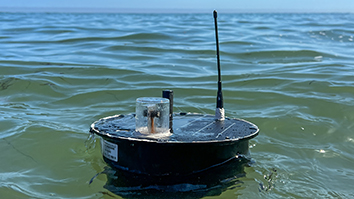Citation
Marshall, R. A., Nicolls, M., Sanchez, E., Lehtinen, N. G., & Neilson, J. (2014). Diagnostics of an artificial relativistic electron beam interacting with the atmosphere. Journal of Geophysical Research-Space Physics, 119(10), 8560-8577.
Abstract
We use a Monte Carlo model to simulate the interaction of a beam of relativistic (0.5–10 MeV) electrons with the upper atmosphere as they are injected downward from a notional high-altitude (thermospheric/ionospheric) injection platform. The beam parameters, defined by realistic parameters of a compact linear accelerator, are used to create a distribution of thousands of electrons. Each electron is injected downward from 300 km altitude toward the dense atmosphere, where it undergoes elastic and inelastic collisions, leading to secondary ionization, optical emissions, and X-rays via bremsstrahlung. In this report we describe the model initialization (i.e., development of the electron distribution), essential features of the Monte Carlo model, and secondary outputs, including optical emissions, X-ray fluxes, secondary ionization, and backscattered energetic electron fluxes. Optical emissions are propagated to the ground through the lower atmosphere, including the effects of atmospheric absorption and scattering, to estimate the brightness of the emission column for a given beam current and energy. Similarly, X-ray fluxes are propagated to hypothetical detectors on balloons and satellites. Secondary ionization is used to estimate the radar signal returns from various ground-based radar facilities. Finally, simulated backscattered electron fluxes are measured at the injection location. The simulation results show that each of these diagnostics should be readily detectable by appropriate instruments.


